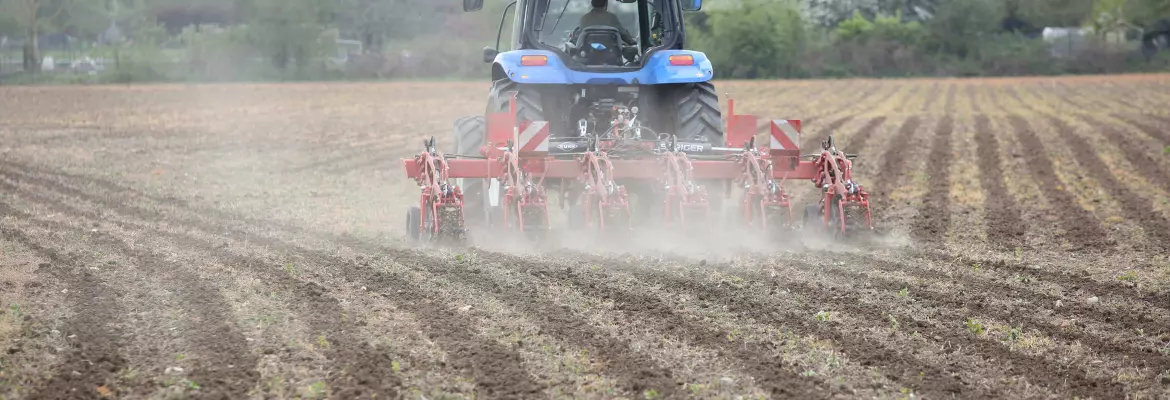
Strip-till is a minimum cultivation technique. It is carried out before seeding with maize, beetroot, sunflower, and rapeseed among other crops. It involves tilling the seeding row only, with tines or discs. Crop residues are left in place. It has many advantages and produces a yield equivalent to conventional cultivation methods: savings in terms of time, money, and inputs, as well as protecting soil life and structure. The advantages of strip-till.
Strip-till combined with spot fertilisation
The strip-till method makes it possible to add fertiliser to the worked strip before seeding. Trials carries out by the chamber of agriculture showed that putting a starter fertiliser (N-P) into the seedbed during the strip-till operation, increased maize yield by +3t of DM/year1.
The seeding line and strip-till: lower planting costs
Strip-till farming methods, depending on soil type, can save time and significantly reduce fuel consumption compared to conventional ploughing. Additionally, strip-till and other min-till methods have been shown to notably decrease planting costs in comparison to ploughing and deep Min-Till methods.
Save time by working the seeding line only
Depending on the type of soil, it is possible to carry out a strip-till operation at between 6 and 12km/h. A deep-working plough will work at around 8km/h. In clay soils, as with conventional methods, 2 passes are recommended. In light soils, one pass is sufficient to prepare the bed for the seed drill.
Strip-till: lower fuel consumption
Strip-till machines, with less than 8 units, consume between 10 and 13 litres per hectare. A conventional method with a plough can easily consume up to 30 litres per hectare2.

Reduced planting costs
Various studies have shown the advantages of min-till methods for reducing planting costs. A technique that works in rows, like strip-till, reduces costs by 30% in relation to a ploughing method, and 20% compared to a deep Min-Till method3.

The advantages of strip-till: agronomic benefits
Preserving soil life and structure with strip-till
The biological activity and humidity in the soil are preserved in the non-worked strips after the seeding operation. Micro-organisms decompose the organic matter produced by the plant cover and residues left on the surface. They ensure the cohesion of soil particles by creating a clay-humus complex which is beneficial to plant-soil interactions and plant nutrition.
Fast and uniform seedling emergence
Working the seeding line with the tines or discs of a strip-till tool creates the ideal conditions for fast and uniform emergence of all crops sown. Root development is enhanced due to optimum seed/soil contact (fine soil). Working the soil in strips heats the soil up to ensure germination in the right conditions. Moisture reaches the roots from the by filtering through from the inter-rows to the strip-till line.
Strip-till limits erosion and slaking, and improves bearing capacity
The structure of the soil is preserved in the non-worked inter-row and leaves residues on the surface. Strip-till also improves the soil’s bearing capacity. There is less slaking crust in silty soils. In hilly areas, the problem of erosion is also greatly, reduced.
Sources:
1 https://normandie.chambres-agriculture.fr/fileadmin/user_upload/Normandie/506_Fichiers-communs/PDF/CULTURES/Conservation_des_sols/Strip_Till/Note_technique_strip_till_-_Normandie.pdf
2 https://chambres-agriculture.fr/fileadmin/user_upload/National/002_inst-site-chambres/actu/2022/COC_2022_VF.pdf
3 https://centre-valdeloire.chambres-agriculture.fr/fileadmin/user_upload/Centre-Val-de-Loire/122_Inst-Centre-Val-de-Loire/Produire_Innover/Recherche_Innovation/CRA_PRDAR/PRDAR_Agronomie/2018/2018_Strip_till.pdf
